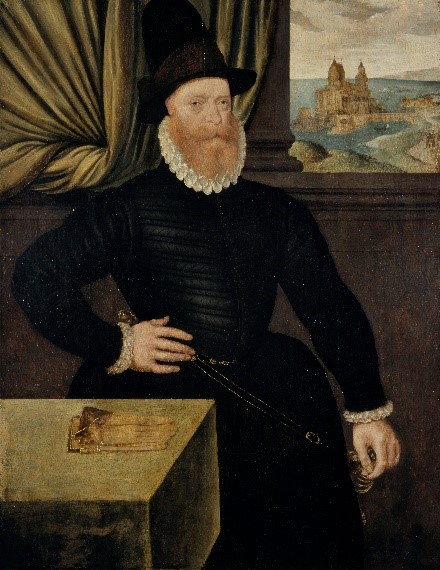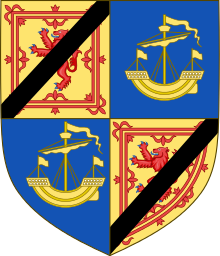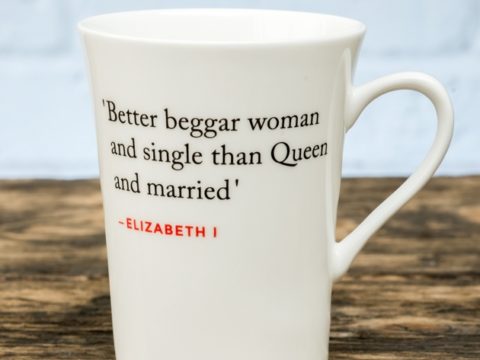Scottish Peers
Chapter 8 : Earls (Morton - Perth)
There were two distinct types of Earldoms – those which originated from the Mormaers of the ancient kingdoms that made up Scotland north of the Firth of Forth, and those granted by kings, although by the late fifteenth century the term Earl was used for both. The old mormaerdoms were ‘comital’ that is, they relate to specific geographic territories and were not just titles. Later earldoms might be comital, or just titular. The earldoms below are only those which were created prior to 1625.
Morton
The earldom of Morton was created in 1458, for James Douglas, 4th Lord Dalkeith, on his marriage to Jean, daughter of James I. Princess Jean was both deaf and mute. Despite these problems, Jean, who was at one time sent to France with the prospect of marrying the Dauphin, was well able to communicate using sign language. The 2nd Earl was killed at Flodden in 1513, having carefully distanced himself from court intrigues and concentrated on improving his lands and wealth.
The 3rd Earl married one of James IV’s illegitimate children, Katherine, by whom he had three daughters. He was obliged to resign some of his lands to Sir Robert Douglas of Lochleven, husband of Margaret Erskine, James V’s favourite mistress. Following the death of James, he petitioned to have the lands returned. As the Regent Arran was his daughter, Margaret’s, husband, this was relatively straightforward.
In 1553, the Earldom of Morton devolved upon James Douglas, as the husband of the 3rd Earl’s daughter, Elizabeth. The 4th Earl of Morton was one of the most notorious men of the mid-16th century in Scotland. Before becoming Earl, this James Douglas had been a supporter of the pro-English faction in Scottish politics, and had even considered the possibility of surrendering Tantallon Castle to the army of Henry VIII.

However, when the mood turned decisively against the English alliance, as represented by the Regent Arran, Douglas took a part in defending Scotland against the Earl of Hertford’s army. He was held hostage in England for a couple of years, having been captured after the Battle of Pinkie. In 1560 he joined the Lords of the Congregation and signed the Treaty of Berwick, which invited Elizabeth I to send troops to help the Lords eradicate French influence. He was persuaded to accept the marriage of Darnley to Queen Mary when his cousin, Lady Margaret Douglas, who claimed the earldom of Angus, resigned her rights in favour of Morton’s nephew.
Morton was one of the prime movers in the murder of David Riccio, storming into the Palace of Holyroodhouse and slaughtering the secretary in front of the pregnant Queen. The betrayal of the plotters by the Queen’s husband, Darnley, who had been one of them, led to Morton being one of the signatories of the Bond of Craigmillar, which probably resulted in the assassination of Darnley.
After Mary surrendered at Carberry Hill, and was imprisoned at Lochleven, Morton was one of the Lords who ‘persuaded’ the Queen to abdicate. He was a close ally of James Stewart, 1st Earl of Moray who was then appointed as Regent for Mary’s son, James VI. On Moray’s assassination, the Earl of Lennox was appointed as Regent, followed by the Earl of Mar, and finally Morton, supported by Elizabeth I of England, became Regent of Scotland in 1572. Morton was suspected of having poisoned the both the Earls of Mar and of Atholl. Nevertheless, Morton managed to put an end to the civil war, but was forced to resign by the Queen’s party in 1578.
In 1580 he was accused of complicity in the murder of Darnley, tried and executed by guillotine on 2 June 1581. Morton’s wife and her two sisters all suffered from mental disturbances. Following Morton’s death there was a dispute between the heirs of the Douglas sisters as to who should inherit. Strictly, the title should have passed to Lord Maxwell, son of Lady Beatrice Douglas and grandson of the 3rd Earl, but instead, it was granted to Morton’s own nephew, Archibald Douglas, 8th Earl of Angus.
On Archibald’s death the earldom of Morton passed to Sir William Douglas of Lochleven. This was the Sir William who had been responsible for Mary, Queen of Scots’ incarceration in his island Castle for which had received £1,289. 12 s. for her keep. The 6th Earl had eleven children and was succeeded by a grandson. The 7th Earl was Lord Chamberlain of Scotland and an ardent Royalist during the Civil War of the seventeenth century. John Douglas is the current, 20th Earl of Morton.
Nithsdale
This earldom was created for the Maxwells, an ancient family from the Scottish borders. The 4th Lord Maxwell was Lord Warden of the West marches under James IV. The Maxwells were in competition with the Crichtons for influence in the area, and the 4th Lord was involved in a violent attack on the 2nd Lord Crichton. Maxwell died at the Battle of Flodden on 9 September 1513.
The 5th Lord Maxwell was a member of the Regency Council during the minority of James V and was Lord Provost of Edinburgh on three occasions. He was appointed as an extraordinary Lord of Session in 1533. In 1537 he had the honour of serving as a proxy for James V on his marriage to Marie of Guise. Maxwell was captured by the English at the Battle of Solway Moss and carried off to London.
Like the other hostages he was persuaded by both fair means and foul to support Henry VIII’s policy in Scotland. In particular he promoted the reading of the Bible in Scots which was advocated to lessen the influence of the pro-French Catholic party. He delivered Caerlaverock Castle to the English but was pardoned and reappointed as Warden of the West March. He died in 1546.
The 6th and 7th Lords Maxwell died in quick succession. The 8th Lord was the son of Lady Beatrice Douglas, daughter of the 3rd Earl of Morton, and on the death of the 4th Earl (see above) he claimed the title which was confirmed in 1581. The grant was revoked in 1586 although he retained the use of the title. He was a Privy Councillor of James VI and Warden of the West March. A Catholic, in 1587 he was one of the Scottish Catholics who worked with Spain to promote the invasion of England. This gained him a period of imprisonment and a heavy fine. Released, he returned to his post of warden but was killed in a feud with the Johnstones of Annandale.
The 9th Lord Maxwell took up the feud with the Johnstones until they came to terms in 1605. In 1608 he agreed to meet with Johnston, both having promised a truce. Maxwell, untroubled by the thought of keeping his word, shot his foe in the back. He fled to France and in his absence was accused and found guilty of treason. He returned to Scotland in 1612 and was executed. He was succeeded by his brother Robert, who was created Earl of Nithsdale and was a general in the Danish army during the Thirty Years’ War. The 5th Earl is famous for a most daring escape from the Tower of London, following the Jacobite Rebellion. The earldom was forfeit at that time.
Orkney
Orkney was a part of the Kingdom of Norway until it passed
to the Scottish Crown on the marriage of Margaret of Denmark to James III.
Orkney was to be held by James as surety for the payment of her dowry, which
never happened. The early earls of Orkney, originally Norse, were replaced by
the Gaelic earls who, although Scottish, gave allegiance to the Norwegian Crown. When
Orkney became part of Scotland, the last of these earls, William Sinclair,
became Earl of Caithness, whilst the title of Earl of Orkney was retained by
James III. In 1567 Queen Mary granted the title of Duke of Orkney to her third
husband, James Hepburn, 4th Earl of Bothwell. This title was forfeited when Mary
was deposed.

In 1581, the title of Earl of Orkney was recreated by James VI for his uncle, Lord Robert Stewart, half brother of Queen Mary. He was succeeded by his son, Lord Patrick Stewart, who indulged in every whim of a mediaeval robber baron, which eventually led to him being brought before the Privy Council in Edinburgh and imprisoned. His son, Robert, on the Earl’s instructions, began an uprising in Orkney but this was quashed by the Earl of Caithness. Patrick and his son were both hanged and the earldom forfeit.
Perth
The earldom of Perth was created in 1605 for James Drummond, 4th Lord Drummond. The 1st Lord Drummond had been created a Lord of Parliament in 1487 by James III. He was executed under James IV for taking part in a clan battle against the Murrays in which Drummond had set fire to a church containing some of the enemy. The 2nd Lord Drummond was a supporter of Margaret Tudor, Queen of Scots, in her efforts to control the Regency, following the death of James IV. He was the grandfather of Archibald Douglas, 6th Earl of Angus, whom the Queen married as her second husband. Lord Drummond was severely reprimanded for assaulting the Lord Lyon King of Arms, who had been sent by the Governor, Albany, with a message to the Queen. Drummond stated that he had merely chastised the Herald for not treating the Queen with proper respect.
In the next generation, the 3rd Lord Drummond was carrying on a feud with Clan MacGregor, allegedly cutting off the ears of some MacGregor poachers. In return for this Drummond was captured and beheaded, with his head being taken to the Castle of his sister, Margaret, Lady Arvorlich, and placed on her dining table and the mouth stuffed with bread and cheese. Unsurprisingly, the pregnant Margaret was distraught. Fortunately she did not miscarry but her son, James Stewart, grew up to plot revenge on the MacGregors and have them proscribed. This was the Lord who was granted the earldom. He was a Covenantor, and fought against the royalists in the Wars of the Three Kingdoms. Later earls converted to Catholicism and supported the Jacobite uprising, for which they were granted a dukedom in the Jacobite peerage. The current holder of the earldom is John Drummond, 9th Earl.





